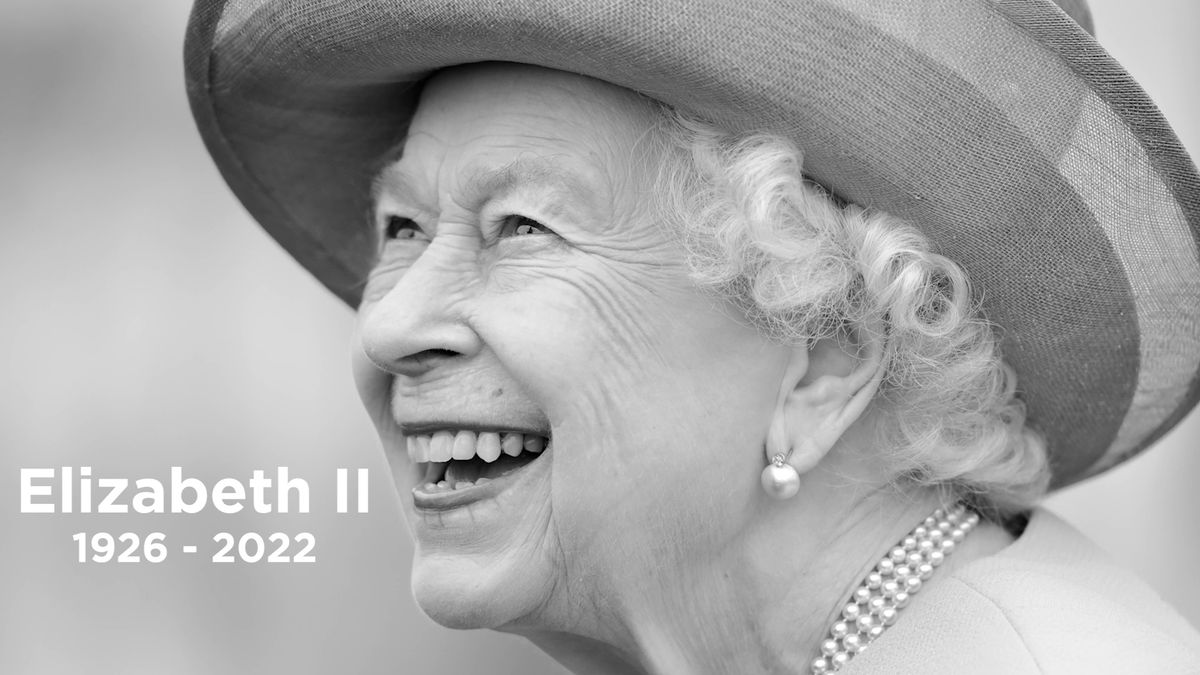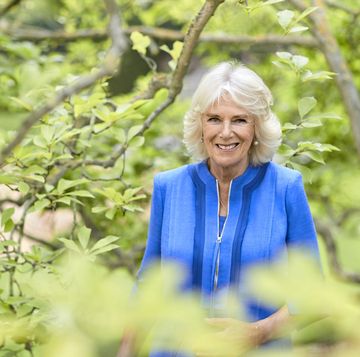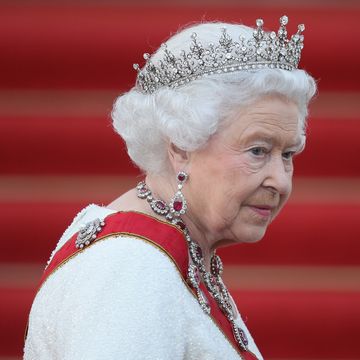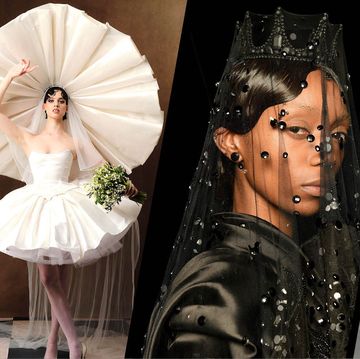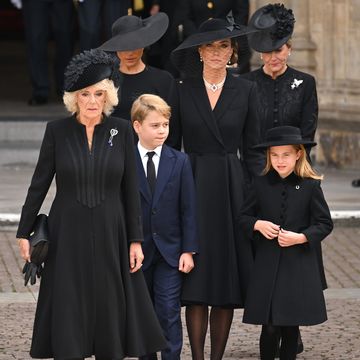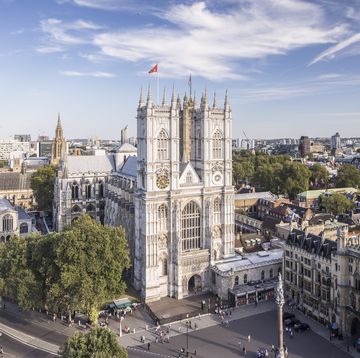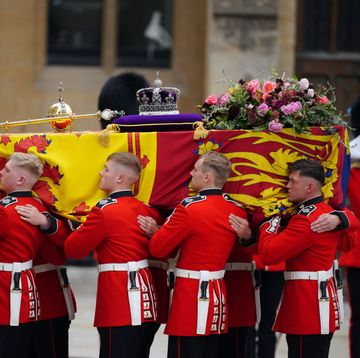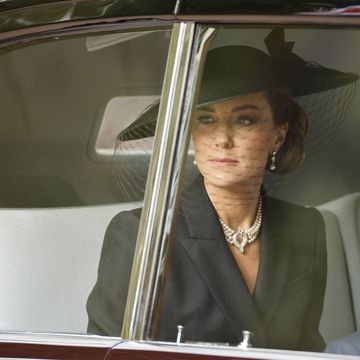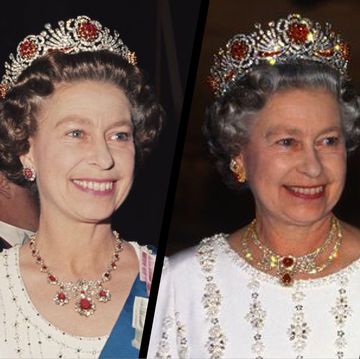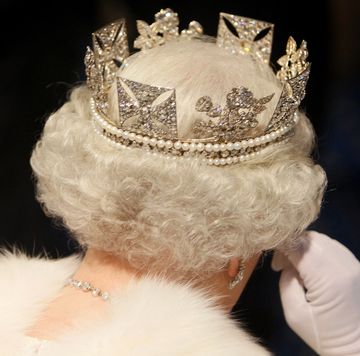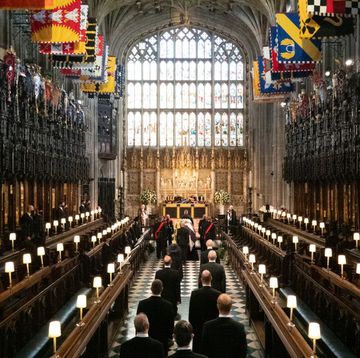Queen Elizabeth II's coffin was adorned with the Imperial State Crown as it processed from Buckingham Palace to Westminster Hall today.
The Imperial State Crown, a glittering symbol of the sovereign, was worn by the Queen for her coronation in 1953, and for many occasions over the course of her reign. But in 2016, and for every State Opening of Parliament thereafter, it was placed on a velvet pillow right next to Her Majesty. It had become — at almost three pounds and laden with 2,901 stones —simply too heavy a burden to bear.
"You can't look down to read the speech, you have to take the speech up, because if you did, your neck would break, it would fall off,” the Queen explained in a documentary. “So there are some disadvantages to crowns, but otherwise they're quite important things."
And the Imperial State Crown is without a doubt a quite important thing. Included in those almost three thousand stones are some of history’s most legendary, including the Cullinan II diamond, St Edward's Sapphire (said to have started life as Edward the Confessor's ring); the Stuart Sapphire (once on the front of the crown but now moved to the back); and the Black Prince's Ruby.
That large red stone at the centre of the Imperial State Crown has been there from the time the crown was re-imagined for Queen Victoria in 1838 (the crown has gone through several reincarnations since the restoration of the monarchy in 1660). It is known as the Black Prince's Ruby but it is, in fact, a 170-carat red spinel. It is sometimes called the Great Imposter and is said to have been stolen in 1371 from the body of the Sultan of Grenada by Pedro the Cruel. Edward of Woodstock (the Black Prince) offered Don Pedro shelter; Don Pedro offered the Black Prince untold treasures including one massive red stone in return.
The “Black Prince’s Ruby” was worn on battlefields by Henry V at Agincourt (where it might have saved him: when the king was struck in the head not only did he survive, but so did the stone) and Richard III at the Battle of Bosworth (where it didn’t bring quite the same kind of luck). There is evidence it was part of Henry VIII’s treasure trove as well. But most famously, it is the red stone above the Cullinan II diamond on the Imperial State Crown.
One of the most valuable gems in one of the most treasured jewellery collections in the world, the stone has sometimes been thought to bring a curse with it. Queen Elizabeth II’s glorious and long reign forced that myth to be reconsidered. And its presence on her coffin's journey is another reminder that, though monarchs may change, the Black Prince’s Ruby endures.


